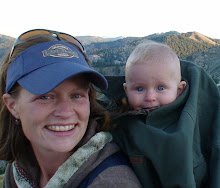Oh my goodness. I hope you have been more consistent working with your horse than I have been in this blog! I knew I was behind, but I had no idea 2 months had passed! :) If you're reading this blog let me know- it's easier to put the effort out to keep it updated if I know people are taking a look at it. If you have any questions you can email them to me or post a comment on the blog.
We've talked about sending your horse forward and about moving the hind or front feet to the left or right... the only direction we have left is back. Backing the horse up is very important. I agree with whoever it was that said you should be able to direct your horse backward as easy as you can lead it forward. Now that takes work! And, as with everything else horse related: as you learn more you learn there is more to learn. In this post I'm going to explain 3 ways to back your horse up. Learn and practice all 3.
1) Handler stands still and backs horse to the end of the leadrope. Stand facing your horse flick the lead rope in a vertical movement (like flicking a towel) with your wrist. If your leadrope is of good quality this will carry a feel (kind of like a shock wave) up the leadrope and signal the horse by bouncing the halter on it's nose. Start lightly, increasing the intensity of the bump until the horse takes a step backwards. As your horse backs up you will need to feed out more rope. Continue until the horse has backed to the end of the lead rope. See how LITTLE it takes to draw your horse forward and repeat a couple times. The key to getting your horse lighter is to ask with less intensity than you know it will take to achieve. For example, on a scale of 1 (low)-10 (high) if I know my horse backs up on an intensity of 4 I will first ask with the intensity of 1 or 2, then follow through with an intensity of 4, releasing when the horse responds. Before long the horse will surprise you and respond at 1. This is true of any maneuver.
2) Backing the horse by your presence (body language). When you approach you horse, it decides to leave, or stay, based on your presence (cues the horse receives from subtle body language). For example, you approach differently if you just want to pet the horse on the head than you do if you want to drive it out of your space. This exercise will help you become more aware of your presence. Start standing 6-8 ft in front of, and facing your horse. With body language that says "move out of my space" (straight posture, square shoulders, direct eye contact) step towards your horse if it doesn't back up, bump the lead rope as discussed above, until it responds. If it does back up, soften your body to give a release of pressure and pet the horse on the forehead. Once your horse starts backing up on just your presence, make sure you can still approach with softness without the horse backing. The goal is for the horse to tune into your body language and sort out when to leave or stay. We don't want the horse backing up every time you walk towards it!
3) Directing the horse backwards with lead rope. This is probably more similar to the picture of "backing your horse" that you have in your head. Stand to the side of your horse head (even with the horse's throatlatch). The hand closest to the horse (you will do this from both sides) is positioned on the halter/leadrope knot with thumb pointing down. The other hand holds a bit of mane at the withers to help keep you body in the correct position (to the side instead of out in front of the horse). Direct the horse backwards, releasing every time it takes a step back. Encourage the horse to stay soft in the poll, backing with its nose down and in.
As your horse is backing, take note that its feet are moving in diagonal pairs (left front moving with right hind and right front with left hind). When you are confident backing your horse is a straight line, start backing circles, figure 8's and serpentines. Do so by placing a front foot out to the side as the horse is backing. For example, if you want the horses tail to go to the horse's right, as the left front is leaving the ground direct it to the outside. At the same time the horse's right hind will step to the right.
Work hard and have fun!
Friday, March 20, 2009
Subscribe to:
Posts (Atom)
